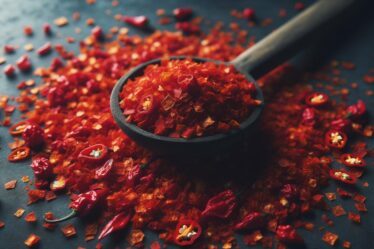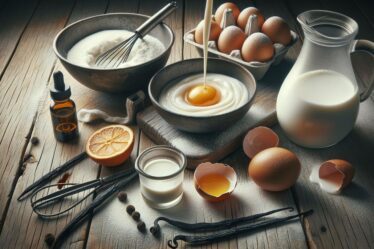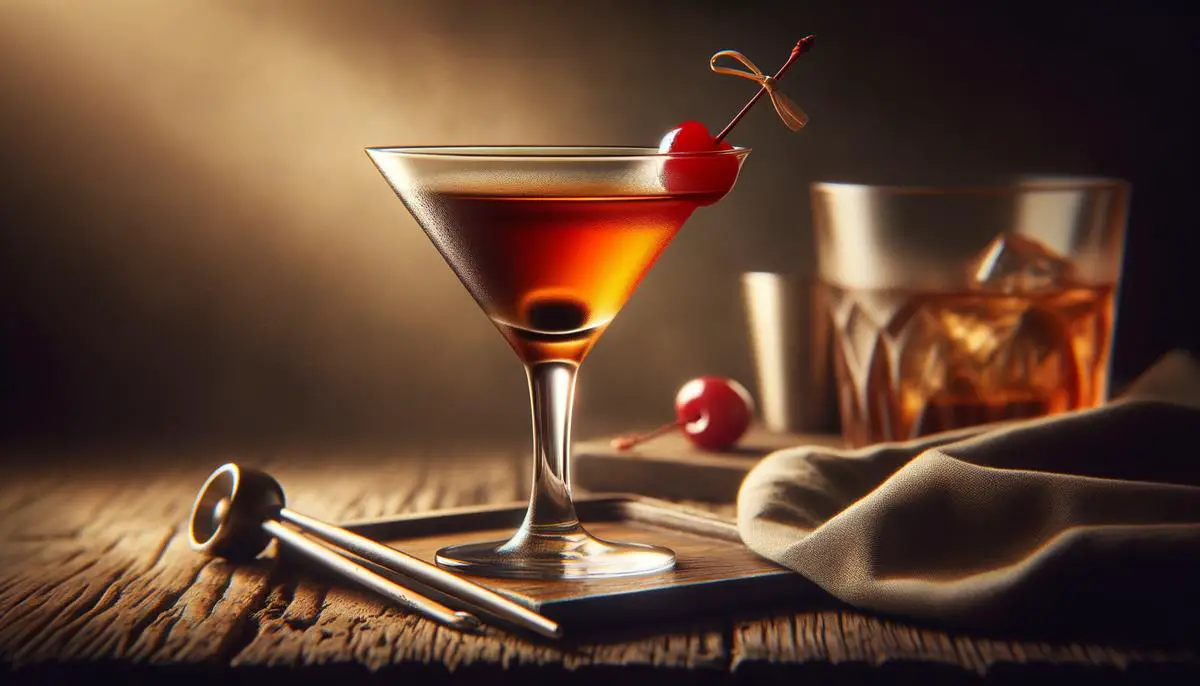
The Manhattan cocktail stands as a classic blend that combines whiskey, sweet vermouth, and bitters into an iconic drink with a rich history. This article explores the roots of the Manhattan, its cultural significance, and how it has evolved over time. From its disputed origins to its modern-day interpretations, we aim to uncover the layers that make this cocktail a timeless favorite. Through understanding its components and variations, we see how the Manhattan has adapted, influencing and being shaped by the worlds of bartending and cocktail enthusiasts alike.
The Origins and History of the Manhattan
The Manhattan cocktail, a mix that swirls whiskey, sweet vermouth, and a dash of bitters into a glass brimming with history, stands as a testament to the complex evolution of drinking culture. Tracing its origin is like peeling an onion, each layer offering a new tale, winding back to the late 19th century. While several stories vie for authenticity, the most frequently cited one takes us to the Manhattan Club in New York City during the early 1870s. It was here, legend has it, that the drink was concocted for a banquet hosted by Lady Randolph Churchill, Winston Churchill’s mother. Despite historical inaccuracies—Lady Randolph was reportedly in England, pregnant with Winston at the time—the myth persists, cementing the cocktail’s association with high society and sophistication.
Distilling the essence of the Manhattan involves more than recounting its purported origins; it requires understanding its ingredients. Whiskey epitomizes the spirit of American resilience and innovation. When combined with sweet vermouth, a European import that mellowed the fiery nature of whiskey, the cocktail symbolizes a confluence of cultures. The inclusion of bitters, a nod to the medicinal origins of many alcoholic concoctions, adds depth and complexity.
The rise of cocktail culture in the United States provided fertile ground for the Manhattan’s ascendance. The Industrial Revolution had engendered a burgeoning middle class, eager to exhibit its affluence and sophistication in parlors and bars. Cocktails became a symbol of this new social stratum, and the Manhattan, with its intricate blend of flavors, was perfectly poised to become a hallmark of refined consumption.
Prohibition tested the mettle of many American cocktails, but the Manhattan emerged unscathed, if not strengthened. Speakeasies, operating in the shadow of the law, kept the art of cocktail-making alive, and the Manhattan’s relatively simple ingredient list made it a staple. Its endurance throughout this period attested to its ingrained position in American drink culture.
The post-war years saw a shift towards lighter, clearer liquors, a trend that sidelined whiskey-based drinks like the Manhattan. Yet, as with all things cyclical, the late 20th and early 21st centuries witnessed a resurgence of interest in classic cocktails. The craft cocktail movement, with its emphasis on quality ingredients and historical fidelity, propelled the Manhattan back into the limelight. Today, it’s celebrated not just as a drink but as a cultural artifact, a relic of a bygone era that continues to evolve.
Bartenders across the globe experiment with variations, substituting traditional rye whiskey with bourbon or Canadian whiskey, or adding a maraschino cherry for a touch of sweetness. Yet, at its core, the Manhattan remains true to its origins—a complex, potent concoction that captures the essence of the city after which it’s named. It stands as a testament to innovation, resilience, and the enduring allure of a well-crafted drink.
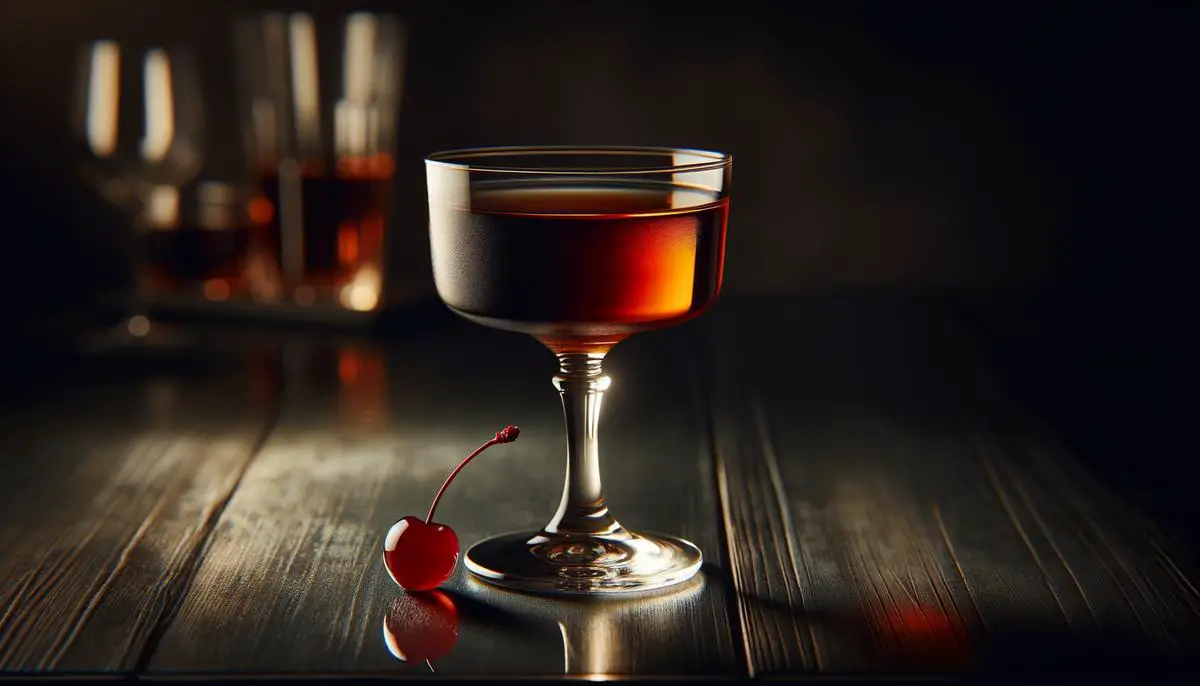
Key Ingredients and Variations
Diving into the subtleties that cement the Manhattan’s status beyond its illustrious history and components offers a riveting look into why this cocktail remains an epitome of the mixologist’s craft. Role of preparation and presentation, the debate around the correct glassware, and even the cherry on top (literally and metaphorically speaking) play pivotal roles in what makes a Manhattan distinctly a Manhattan.
Preparation is more than a set of steps for constructing a Manhattan; it’s a ceremony. A dance between precision and flair. The process begins with selecting the right whiskey. Rye is traditional, offering a spicy kick that beautifully counters the sweet vermouth’s herbal richness. However, bourbon presents a sweeter, rounder alternative, showcasing the drink’s adaptability to personal taste while maintaining its core identity.
Then, there’s the stirring. A Manhattan demands patience — a slow, methodical integration of whiskey, vermouth, and bitters over ice, achieving a chill without dilution. This is critical. The goal is a smooth texture that carries each flavor in harmonious balance, a testament to the bartender’s craft. Rapid shaking is shunned; it introduces air bubbles and ice shards, which detract from the desired sleekness and clarity.
Glassware, too, merits discussion. Traditionally served in a coupe or a martini glass, the choice influences the drinking experience. The stem prevents warmth from the hand affecting the drink’s temperature, preserving its intended profile. Despite this, some aficionados prefer a rocks glass, arguing it enhances the aromatic experience. It’s a subject of contention, but ultimately, the glass reflects drinker’s preference and occasion, adding another layer to the Manhattan’s diverse character.
Lastly, the garnish. A maraschino cherry is not merely an adornment but a final flourish that rounds out the drink’s complexity. Yet, here lies another juncture for personal touch — a dark, rich Luxardo cherry or a simple maraschino, each offers a distinct finish. Some prefer a twist of orange or lemon peel, introducing a citrus note that brightens the whiskey’s depth. This small decision encapsulates the Manhattan’s essence — a blend of tradition and personal expression.
In essence, the making of a Manhattan is both art and science. From the deliberate choice of ingredients to the rituals of preparation and the nuances of presentation, each element contributes to its stature as a symbol of cocktail craft. A Manhattan is not just a cocktail; it is a narrative of taste, a vessel for individuality, and a testament to the enduring allure of mixing spirits. Beyond its ingredients, a Manhattan embodies the art of cocktail creation itself — an enduring classic that adapts, inspires, and thrives.

The Art of Mixing the Perfect Manhattan
The crafting of a Manhattan is an intricate dance between tradition and personal touch, a balance that has made it an enduring favorite in the world of cocktails. Diving into the subtleties of this classic drink reveals the craftsmanship involved in elevating it from a mere mixture of ingredients to a symphony of flavors.
One key technique lies in the choice of whiskey. While both rye and bourbon carry their own distinctive profiles, the former’s spicy kick has traditionally been favored for its ability to cut through the sweetness of the vermouth. This choice is not just about flavor preference but understanding how the whiskey’s characteristics impact the overall balance of the cocktail.
The debate between stirring and shaking is more than just a matter of bartender’s flair. Stirring gently coaxes the ingredients together, preserving the clarity and silky texture of the drink, particularly important in a cocktail as refined as the Manhattan. Shaking, on the other hand, is more aggressive, potentially over-diluting and clouding the cocktail – a faux pas in the eyes of purists.
Glassware selection might seem like a detail reserved for the aesthetically minded, but it too plays a role in the Manhattan’s presentation and enjoyment. Whether served in a sleek coupe, a timeless martini glass, or a sturdy rocks glass, each vessel not only frames the drink but influences the drinking experience. The choice speaks to the occasion and the drinker’s style, making the Manhattan a versatile companion for any setting.
Then there’s the garnish, which does far more than add a decorative flourish. A maraschino or Luxardo cherry introduces a hint of sweetness and color, while a twist of orange or lemon peel adds a fragrant oil that gently perfumes the drink. These finishing touches are essential in creating a multisensory experience, engaging not just taste but sight and smell.
Personal preference is ultimately what defines a Manhattan. Whether it’s tweaking the whiskey-to-vermouth ratio, selecting a specific brand of bitters, or choosing an unconventional garnish, these personal touches transform the cocktail from a standard recipe into a personalized creation. It’s this capacity for adaptation and customization that keeps the Manhattan not just relevant but revered across generations.
Understanding the Manhattan is to appreciate the art behind cocktail making. Each element, from ingredient selection to presentation, contributes to a larger narrative of sophistication, resilience, and enjoyment. The Manhattan isn’t just a cocktail; it’s a statement, a testament to the enduring appeal of quality craftsmanship and the pleasure of a well-made drink.
In the realm of cocktails, the Manhattan remains a benchmark of elegance and innovation. Its legacy is not just in its storied past but in its ongoing evolution, a cocktail that invites both reverence and reinvention. As bartenders and enthusiasts continue to explore its potential, the Manhattan stands as a vibrant symbol of the cocktail craft, a drink that never ceases to captivate and inspire.
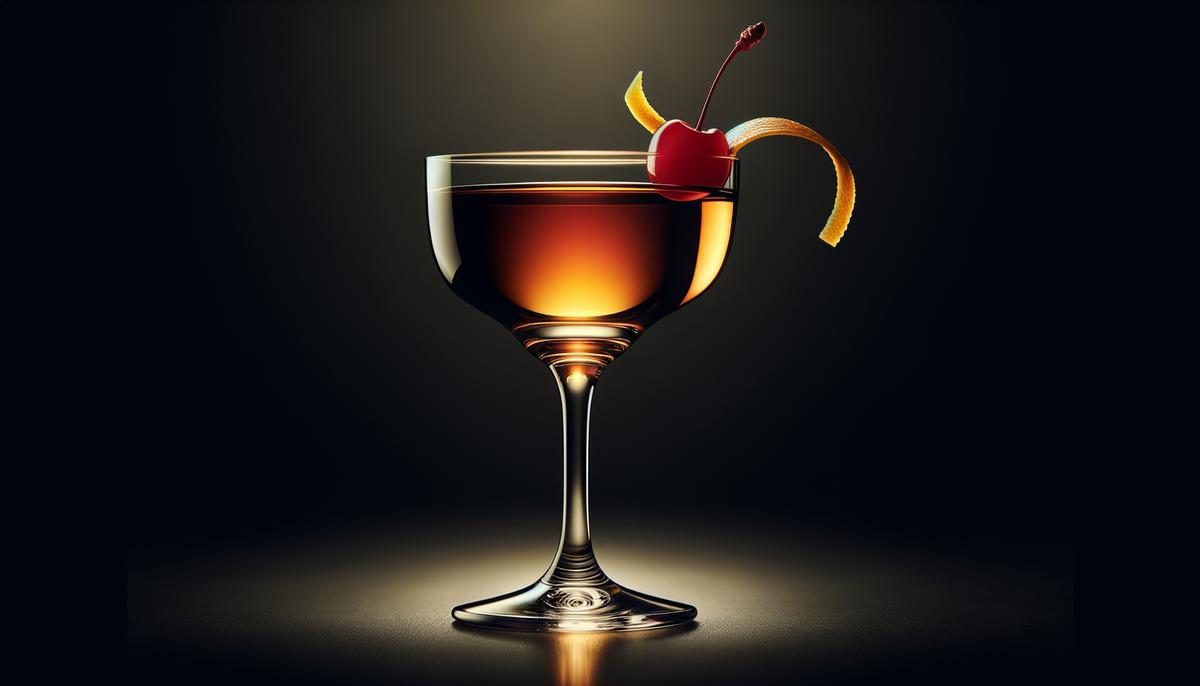
Cultural Impact and Modern Resurgence
While the facets of the Manhattan cocktail have been elaborately discussed, from its rich history to its significance within both classic and modern cocktail culture, another element that has played a critical role in its longevity is its adaptability to local and seasonal ingredients. This adaptability has allowed the Manhattan to not just survive but thrive, seamlessly blending into the fabric of global cocktail culture.
Local distilleries and seasonal ingredients offer bartenders the canvas to paint their version of the Manhattan, making it a cocktail that is as much about the place as it is about the recipe. This localization of the Manhattan isn’t merely about changing a type of whiskey or vermouth; it’s about infusing the cocktail with the essence of the locale, be it through the use of a local whiskey that carries the terroir of its origin, or through the incorporation of a house-made vermouth that reflects the botanicals of the region. Such practices not only elevate the drinking experience but also celebrate the diversity and richness of local cultures.
Moreover, the Manhattan’s framework has proven to be remarkably versatile, serving as a base upon which countless variations have been built. This versatility speaks to the cocktail’s intrinsic balance of flavors—the warmth of the whiskey, the sweetness and complexity of the vermouth, and the depth added by the bitters—that can be subtly shifted or entirely transformed through creative reinterpretations.
Bartenders around the world continue to push the boundaries of what a Manhattan can be. For example, in Tokyo, a bar might use a local single malt whiskey and a umeshu (plum wine) in place of vermouth, introducing a distinctly Japanese interpretation. In the heart of Kentucky, a bourbon with a high rye content might be chosen to pay homage to the spirit’s local heritage, while a bar in the Mediterranean might opt for a vermouth that highlights local grape varieties and botanicals.
The narrative of the Manhattan is thus continuously woven with new threads, each addition enriching its story. This ongoing evolution is reflective of the cocktail’s ability to engage with its drinkers in a conversation that is both timeless and timely. It invites experimentation and personal expression, making each Manhattan not just a drink, but a reflection of its maker and the moment in which it is created. This personal connection adds another layer to the cocktail’s enduring popularity.
In conclusion, the Manhattan remains a staple in cocktail culture not just because of its storied past, but due to its open future. It stands as a testament to the creativity and innovation of bartenders worldwide, who respect its heritage while simultaneously writing its next chapter. The Manhattan, then, is more than a cocktail; it’s a global dialogue, ongoing and vibrant, inviting all who appreciate the art of the drink to partake in its evolution.

The Manhattan cocktail, with its intricate balance and rich history, continues to be a beloved choice among connoisseurs and casual drinkers alike. This exploration reveals not just the drink’s past, but also its vibrant present and promising future. As bartenders around the globe bring their unique touch to this classic, the Manhattan remains a testament to the art of cocktail making. It stands not merely as a drink, but as an ongoing narrative that celebrates innovation, tradition, and the shared experience of enjoying a well-crafted beverage. The Manhattan’s legacy is shaped by those who make it and those who enjoy it, ensuring that its story is far from finished.

